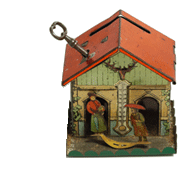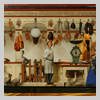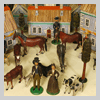|
|
Periodically, in all collecting fields, the subject of investment crops up. Antique toys can be an excellent investment that not only give immense pleasure during ownership but also provide a profit at dispersal. However, there are absolutely no guarantees that a profit can or will be made.
In our experience the following list of observations will improve the chances of getting a satisfactory investment result:
- Always buy because you like a toy and wish to own it.
- Remember the costs of buying and selling (commissions, advertising, travel, etc.) are relatively high compared with buying or selling stocks or bonds.
- Always buy quality toys in the best condition possible - these will be the items easiest to sell.
- Think medium to long term. Do not buy with an aim to resell in a short period, 5 - 10 years is the minimum.
- Remember all collectibles go through periods of being in and out of favour. To buy quality toys that appear undervalued at present, such as 19th century horsedrawn items by Lutz or Rock & Graner may well prove to be a wise decision. We are happy to advise on other potentially undervalued areas.
- The best investment results that I have seen are from quality collections that have been very discreetly put together with private purchases and then sold some 5 - 10 years later. These collections look totally fresh to the market and will have strong appeal to both collectors and dealers, thus resulting in good prices.
- Buying at public auction and trying to resell at auction shortly afterwards is the near guaranteed way to make a loss, as the toy will appear to have been either unsold initially or unwanted by the purchaser. The hidden costs in auction - commissions, buyer’s premium, insurance, illustration cost, tax, etc. can be very high resulting in a difference of between 20 - 40% in the price received by the vendor and the price paid by the purchaser. Most dealers work on a significantly smaller mark up.
|
 |



